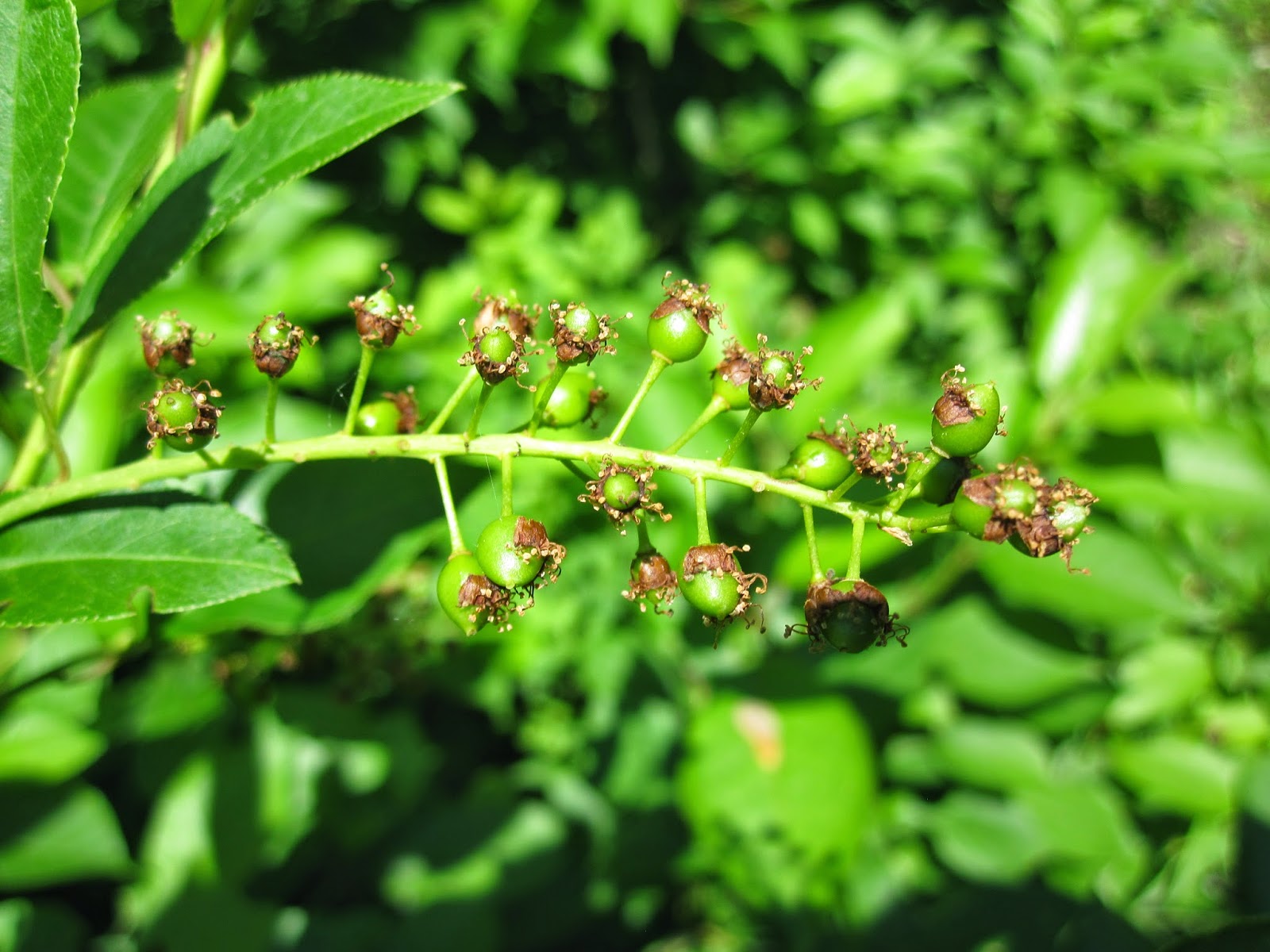This year I followed the progression of a stand of small Black Cherry trees along one of my favorite routes. These trees are five to seven feet fall and produce a good crop of cherries almost every year. The fruit changes quickly, on almost a daily basis except for a month-long period of growth of the green fruit, making it a good study on plant progression.
This stand is growing in an old field, very common for black cherry trees - they need sun and are often found at the edges of fields and along roadsides. They produce fruit after growing for about 10 years, becoming heavy only after 30 years of growth. They can live up to 250 years, but usually stop producing fruit after 100 years.
Their seeds have evolved to benefit from being consumed by animals; not only does this scatter seeds widely, but germination is actually improved by passing through the digestive tract of an animal, a process knows as scarification. One can clearly see cherry pits in bear scat at this time of year.
As with other pit-fruit trees, the Black Cherry has also evolved defense mechanisms. The leaves, pits, and fruit all contain compounds that break down into cyanide. The pits also contain enzymes that when ground (or say, chewed) do break down the compounds into cyanide. The leaves similarly will produce cyanide if eaten by animals. However, the fruit does not contain these enzymes! Thus animals let the leaves grow, eat the fruit without chewing the pits, and spread the enhanced pits throughout the countryside to spread the species.
In a bit of reversal, the Black Cherry has been introduced to Europe, where it is now considered an invasive species! In New England there are caterpillars that can consume the leaves and perhaps keep the plant in control, where Europe may be missing this factor.
 |
| May 23 |
 |
| May 25 |
 |
| June 6 |
 |
| June 15 |
 |
| July 20 |
 |
| July 24 |
 |
| July 26 |
 |
| July 31 |
Once they get close to ripe it only takes a few days for the local fauna to completely clean them out. In past years I have seen signs of bears eating the fruit, but this year they were consumed by birds and squirrels before the berries could even fully mature and attain the dark color that gives them their name. Here is a picture from a prior year showing their dark purple-black color when fully ripe.
I have tried eating them, but they are almost all pit, and they don't really taste all that good. A bear must have to eat an awful lot of them to get a full belly!









No comments:
Post a Comment